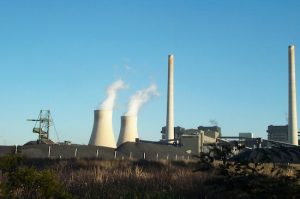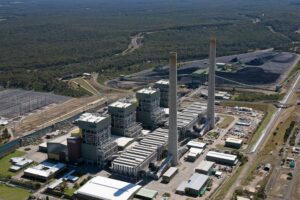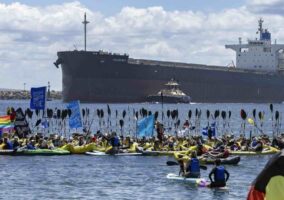EnergyAustralia, one of the nation’s big three “gentailers,” says it is forging ahead with plans to transition to cleaner forms of energy, despite a challenging six months that included forking out $65 million – and counting – to address its ongoing Yallourn coal mine problems in Victoria.
In a results announcement published late Monday, EnergyAustralia said higher gas prices, lower electricity prices, and reduced coal output had squeezed the retailer’s underlying earnings to $363 million in the six months to 30 June 2021, delivering an 18% drop on the same period a year ago.
“Lower wholesale power prices, the increased price of gas purchase agreements, and a reduction in generation at Yallourn power station following heavy rainfall had the largest bearing on financial performance,” the company said.
Overall, EnergyAustralia’s contribution to parent company CLP Group’s half-year earnings amounted to a loss after tax of $31 million, including the provision of $46 million ($65m pre-tax) for ensuring Yallourn’s safe operation following what is described as a “rainfall event.”
As RenewEconomy has reported, that rainfall event caused the Morwell River, which runs through EnergyAustralia’s Yallourn brown coal mine in Victoria’s Latrobe Valley, to swell to more than 30 times its usual flow.
This, in turn, caused cracks to form in an embankment created to protect the mine – called the Morwell River Diversion (MRD) – raising the risk of flooding for the second time in less than a decade.
To avert that risk, EnergyAustralia was initially allowed to take emergency action to further divert the river’s flow.
The connected Yallourn power plant, which currently generates around 20 pert cent of Victoria’s electricity, was also reduced to a quarter of its 1,480MW capacity for several days as the mine’s stability was assessed.
In a note in the CLP interim results announcement, it said the Group had made a provision of $A65 million ($HK379 million) for examination of the extent of the damage to the MRD along with potential rectification options.
But that amount is likely to rise, with further provisions for “longer-term rectification works” being dependent on further assessments, and not accounted for in the first-half financial statements.
To make those further assessments, EnergyAustralia must first complete works to divert up to 3,500 megalitres a day – equivalent to 1,400 olympic-sized pools – from the Morwell River, to dry out the MRD; a measure the company was cleared to take at the end of last week.
This puts the overall cost of the MRD – which was built at a cost of $120 million to last until 2032 and withstand a one-in-10,000 year flood – in dizzyingly high territory, considering its previous failure in 2012 rains, when it allowed an average of 500 million litres a day to flow into the mine.
In its results on Monday, EnergyAustralia lists its decision to retire the Yallourn power station early, in mid-2028, as a key business highlight and milestone of the past six months, alongside its plans to build Australia’s first four-hour utility-scale battery of 350MW capacity by 2026 in the Latrobe Valley.
“We provided the energy market, local community and Yallourn workforce clarity by announcing the plant’s retirement in mid-2028 with seven years’ advance notice,” said EnergyAustralia’s new managing director, Mark Collette, in a statement.
“Our approach sought to demonstrate coal-fired power can exit the market in a responsible and respectful way,” he added.
“The Wooreen battery in Victoria, Tallawarra B Project in New South Wales and Kidston pumped hydro storage facility in Queensland will be integral pieces of the modern energy system taking shape in Australia. They demonstrate what is possible when governments and industry work together in the interests of customers.”
On Tallawarra B – the $400 million, 300MW fast-start gas generator that will combine “green hydrogen” with gas in NSW, with the support of both NSW and federal government funding – Collette said preparation works would begin later this year.
“We continue to see opportunities to make investment to accelerate Australia’s energy transition and will proactively explore ways to optimise our capital structure including forming partnerships with others where appropriate,” said CLP in its interim report.
“It has taken the world more than a century to build the electricity infrastructure that we have today. To realise a carbon-neutral society by 2050, the entire system needs to be upgraded or replaced by clean energy in less than 30 years,” the report continued.
“To achieve this ambitious goal, the electricity industry needs to work closely with all stakeholders in the value chain including governments, financial institutions and customers.”
Meanwhile, Collette said EnergyAustralia would progress major maintenance programs at its Yallourn, Tallawarra and Mt Piper power stations, ensuring they would be there for customers during the coming summer peak.
See also our new Grid Connections: Who’s going where in Australia’s energy transition for some latest news on job movements, including at EnergyAustralia.








